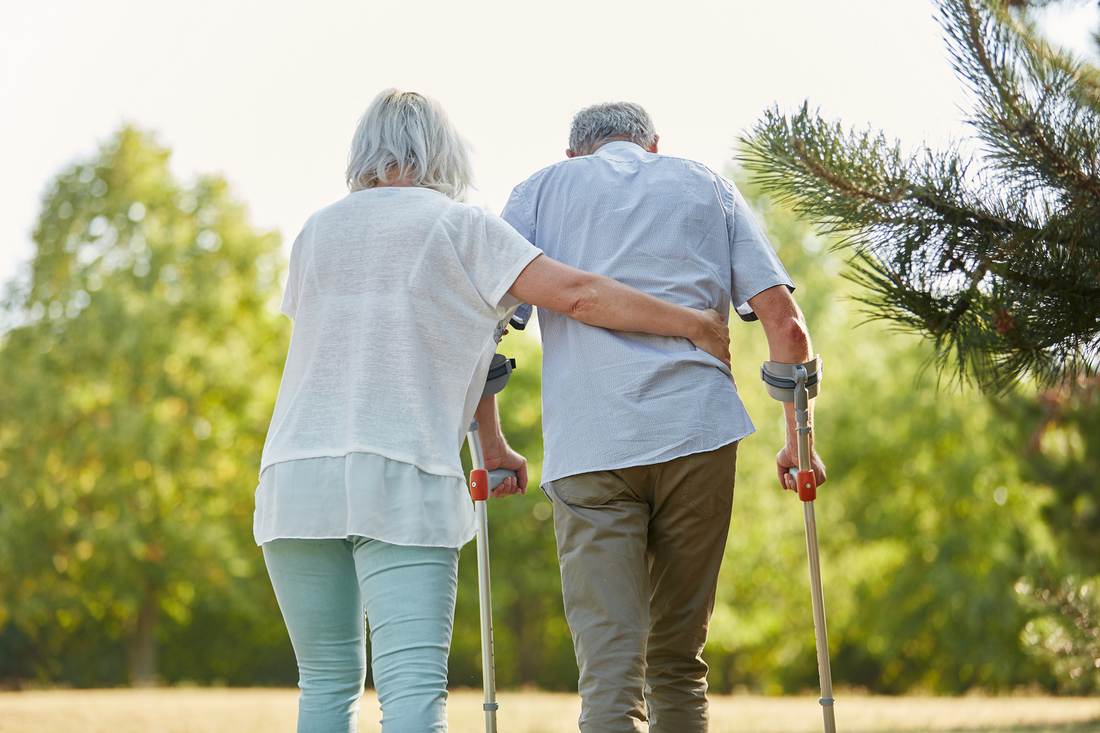
Sarcopenia: The Silent Age related Muscle Loss —And How to Stop It
Share
You bend to lift a piece of luggage. It feels heavier than it used to. You notice your arms look smaller. Getting up from the floor takes more effort than it should.
This isn’t just getting older.
It could be sarcopenia—the slow, silent loss of muscle that affects nearly everyone over 50. And while it’s common, it’s not inevitable.
The good news? You can fight back—and rebuild strength—if you know what’s really happening in your body.
What Is Sarcopenia?
Sarcopenia is the gradual, age-related loss of muscle mass, strength, and function. It can start as early as your 30s and accelerates every decade after that. By your 60s, you might have lost up to 25% of your muscle. By your 80s, it could be 50%.
It’s more than just a cosmetic issue. Sarcopenia is a medical condition, now recognized by organizations like the World Health Organization (WHO) and the National Institutes of Health (NIH). It affects up to 1 in 3 adults over 60 and nearly half of those over 80.
How Sarcopenia Happens: What’s Going On Inside
Muscle loss with age isn’t just from being less active. It’s driven by real biological changes, including:
- Anabolic Resistance: we age, our muscles become less responsive to the usual signals that trigger growth—like exercise or protein intake.
- Hormonal Shifts: Lower testosterone, estrogen, and growth hormone all reduce muscle-building capacity.
- Chronic Inflammation: Low-level inflammation (often from poor diet or lifestyle) breaks down muscle tissue over time.
- Poor Mitochondrial Function: Your cells produce less energy, so your muscles fatigue faster and recover slower.
- Lower Physical Activity: Inactivity accelerates the cycle—less use leads to faster loss.
The result? A slow, steady decline that many people don’t notice until it starts affecting daily life.
Why Sarcopenia Matters More Than You Think
Losing muscle doesn’t just mean shrinking arms or weaker legs. It affects your entire body and your long-term health.
Here’s what sarcopenia is linked to:
- Falls and fractures from reduced balance and strength
- Weight gain from a slower metabolism
- Insulin resistance and type 2 diabetes
- Heart disease and high blood pressure
- Loss of independence and reduced quality of life
Muscle is more than movement—it’s a metabolic organ, a glucose buffer, and a protective layer for aging.
Are You at Risk?
Sarcopenia can creep up quietly, but here are some warning signs to look out for:
- Feeling weaker than usual
- Difficulty climbing stairs or standing from a chair
- Shrinking muscle tone or looser skin
- Lower energy or stamina
- Weight gain despite a stable diet
Doctors may use grip strength, walking speed, or DEXA (bone density) scans to measure muscle mass and diagnose sarcopenia, but you don’t need a test to take action.
Can You Reverse Sarcopenia?
Yes. Muscle loss with age is common—but it’s not irreversible.
Studies show that with the right combination of movement, nutrition, and supplementation, older adults can build muscle, regain strength, and improve function, even in their 70s and 80s.
The 3-Part Plan to Beat Sarcopenia
1. Movement: Resistance Training Is King
You don’t need to become a bodybuilder. But you do need to use your muscles regularly to keep them.
Focus on:
- Strength training 2–3 times per week (squats, presses, farmer’s carry, rows, etc.)
- Balance and mobility exercises (standing on one leg, getting up from floor, Yoga, etc.)
- Cardio or Brisk Walking 5 times per week (20-30 min of brisk walking, cycling, or swimming)
- HIIT Training (optional, 1-2 times per week)
2. Nutrition: More Protein Isn’t Always Enough
Eating protein is important—but after 50, your body doesn’t absorb it as well. That’s the anabolic resistance we mentioned earlier.
Tips:
- Include high-leucine foods like eggs, chicken, fish, whey protein, pasture raised beef
- Space protein throughout the day (not just dinner)
- Add high-fiber vegetables to support gut health and digestion
Still, diet alone often isn’t enough—which is where supplements can help
3. Supplementation: Target the Root of Muscle Loss
This is where essential amino acids (EAAs) come in. Unlike whole protein, EAAs are already broken down into the exact building blocks your muscles need. They’re rapidly absorbed—and more efficiently used by the aging body.
Clinical research shows:
- EAAs stimulate muscle protein synthesis even in older adults
- They bypass anabolic resistance
- Supplements with elevated BCAAs, especially leucine, can supercharge muscle repair and growth
Try Strength Renew 50+: Built for Aging Muscles
Our supplement, Strength Renew 50+, was designed specifically for adults over 50 who want to fight sarcopenia naturally.
It includes:
- All 9 essential amino acids
- Elevated BCAAs for enhanced muscle repair
- Clinically informed ratios for maximum absorption and utilization
- Additional protein synthesis and antiaging ingredients to support muscle synthesis and protect gains
Whether you’re recovering from inactivity, starting a new workout routine, or simply trying to stay strong as you age, Strength Renew 50+ helps give your muscles the tools they need.
Final Thoughts: Strength Is the Real Fountain of Youth
Sarcopenia may be silent—but it’s not invisible. Every pound of muscle you keep helps protect your metabolism, your balance, your confidence—and your independence.
And the best part? It’s never too late to rebuild. Start moving. Eat intentionally. Support your muscles with the right fuel. Your future self will thank you.
